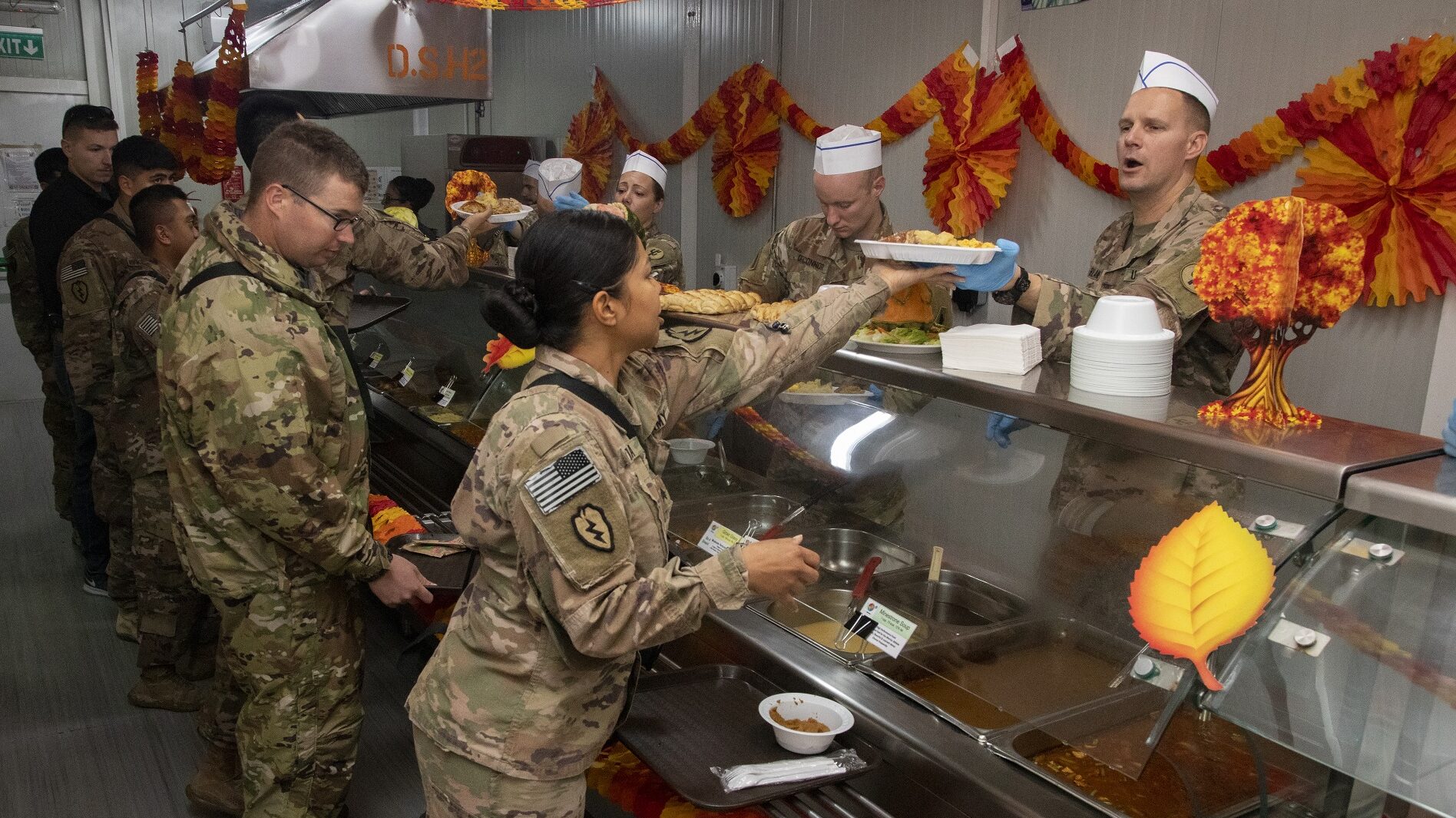

Editor’s note: This article was originally published in November 2016
One hundred and fifty-nineThanksgivings. That’s how many our country has celebrated since the holiday’s national recognition. During that time, our armed forces have fought in numerous wars and conflicts, and many service members have spent Thanksgiving Day deployed in foreign countries or behind enemy lines.
And despite huge nutritional and logistical challenges, the spirit of Thanksgiving has been alive and well in the armed forces for over a century.
Here are seven things you probably didn’t know about Thanksgiving and the military:
1. The first nationally recognized Thanksgiving wasn’t observed by the military
Blame resources. In October 1863, Abraham Lincoln was the first president to proclaim a national Thanksgiving, with the Civil War in full swing. But the Army’s commissary didn’t have the necessary food, both in type and quantity, to provide a full Thanksgiving meal for the troops. Awkward.
2. Abraham Lincoln is kind of responsible for Black Friday
Lincoln’s Thanksgiving Proclamation of 1863 stipulated that the American people “set apart and observe the last Thursday of November next, as a day of thanksgiving.” This means, as a nation, we’re permanently #blessed with Friday following Thanksgiving Day. Leave it to us to pair extra days with more excuses for capitalism.
3. Add Spain to your list of Thanksgiving blessings
The Spanish-American War was the first overseas war fought by the United States. Transporting food was extraordinarily difficult, with many rations spoiling before reaching their destination. But American ingenuity prevailed by 1905, with the establishment of a cooking school at Fort Riley which made future military Thanksgivings possible.
4. Americans were guilt-tripped into rationing
During World War I, rations for “doughboys” were greatly improved. A greater and fresher array of food was made available, even to troops serving on the front lines. Camps provided a hot turkey dinner for their service members.
Despite this, citizens at home were instructed by the government to “Eat less wheat, meat, fats, sugar. Send more to Europe or they will starve.”
5. Even Nazis couldn’t stop Thanksgiving
World War II presented a hugely intricate logistics challenge in supplying our troops with food. During this time, soldiers subsisted largely on canned goods, dried fruit, and powdered eggs. But for Thanksgiving, the supply chain went to extraordinary lengths by transporting over 1.6 tons of turkey to ensure the troops ate a traditional hot dinner.
6. Vietnam incepted the MRE
By the time the Vietnam War rolled around, advances in food preservation and transportation made it possible for the majority of soldiers to eat two hot meals per day. To serve the traditional Thanksgiving meal, soldiers were rotated off the front lines.
The amount of food being prepared necessitated standardized guidelines, which gave birth to the Armed Forces Recipe Service in 1968, which means we get chili mac today.
7. Four branches means four different Thanksgiving meals
The present-day Army, Navy, Air Force, and Marine Corps create individual Thanksgiving menus for their forces. But the recipes are standardized by the U.S. Army Natick Soldier Systems Center, aka USSC. USSC food technologists have created over 1,500 standardized recipes, including ones for a traditional Thanksgiving dinner. (Roast turkey can be found under L-161-00.)
This means that our deployed troops will enjoy a dinner like they would at home, with I-013-00, aka pumpkin pie, included.
